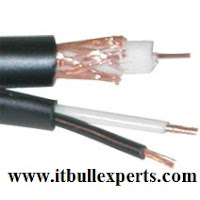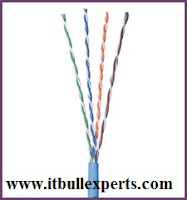Benefits of UTP Cat6 Cable over Coaxial Cable .
First of all we have know what are the benefits of UTP cable over coaxial cable .For this read below :-
1:How to install CCTV Camera using Coaxial Cable
2:- How to install CCTV Camera using UTP Cat6 Cable with UTP balun .
UTP vs Coax?
In today's market, one big question for installers in of CCTV systems is whether to used unshielded twisted pair cable or the traditional coaxial cable for analog systems. Let's take a look at the pros and cons of both cable types.
Coaxial cable has an impedance of 75 ohms and is available in both RG-6 and RG-59 cable sizes. The difference between the two is in the overall size of the cable and the gauge of the wire: 18 awg for RG-6 and 20 awg for RG-59. RG-59 has the benefit of being assembled with a pair of 18 awg wires for powering your camera when an AC outlet is not present near the camera location. Due to the heavier gauge of RG-6, it will transmit video signals for longer distances. However, take care to use RG-6 which is specifically designed for the transmission of CCTV as opposed to broadband video. Broadband video will utilize copper-clad steel while CCTV performs best with bare copper.

UTP or Unshielded Twisted Pair cable has traditionally been used in voice and data applications. Its quality is determined by the category rating. Categories 3, 5e, and 6 are in wide spread use in the industry. While they are all 100 ohm cable, the bandwidth rating of the cable is determined by the construction of the cable. To make a long story short, the twisting of the cable, and the separation of the pairs allows greater bandwidth. While cat 3 cable can be used, it is not recommended for new installations.

UTP has both advantages and disadvantages in relation to the more traditional coaxial cable.
Pros:
smaller diameter cable means easier installationstransmits video over longer distances
only requires one pair for video leaving the remaining pairs for power and or audio
lower cost
*can be used later for an IP camera
Cons:
most UTP cable isn't weather-proof like coaxusing the additional pairs for power can cause interference (particularly when using AC) over longer distances
requires a balun at both ends of the cable run
The winner?
UTP!
While I almost exclusively use UTP cable, there are circumstances when coax is still appropriate. Primarily when the cable run is so short that the cost of the baluns exceeds the savings on the cable. Also, rewiring for future network cameras would have to be very easy.
No comments:
Post a Comment